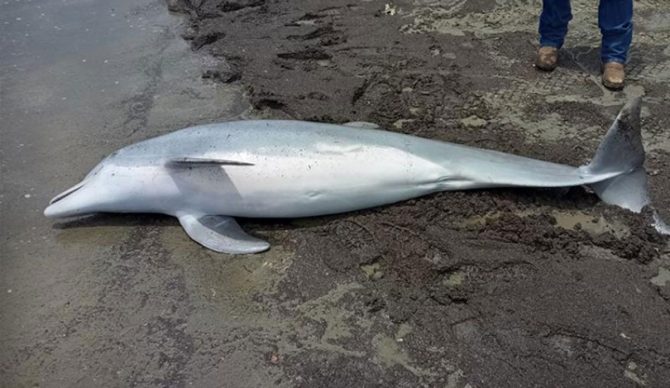
Juvenile bottlenose dolphin. Photo: Audubon Aquarium Rescue
Researchers have detected the presence of human pharmaceuticals, including fentanyl, in dolphins from the Gulf of Mexico. The find was made by faculty and student researchers at Texas A&M University-Corpus Christi (TAMU-CC) marine biology program, and published in the journal iScience.
As ABC News reports, research for the study began in September 2020, when TAMU-CC scientists monitoring the dolphin population in the Gulf of Mexico encountered a dead dolphin floating in the water and towed it back to campus to study. Years later, graduate student Makayla Guinn retrieved blubber from that dolphin for her own research. Though she was looking for hormones in the tissue, the lab she sent the sample to did an untargeted analysis that showed thousands of other chemicals were also present. In the process, they were surprised to find a host of unexpected compounds, including the pharmaceuticals carisoprodol, meprobamate, and fentanyl.
In the wake of that find, TAMU-CC undergraduate Anya Ocampos began collecting more samples and running them through a mass spectrometer for her own honor student undergraduate project. This time, they were specifically looking for pharmaceuticals. According to the study, entitled “Pharmaceuticals in the Blubber of Live Free-Swimming Common Bottlenose Dolphins,” 89 dolphin blubber samples were collected — 83 from biopsies from live animals, and six from deceased dolphins. They found pharmaceuticals in 30 of them. Fentanyl was present in 18 of the biopsies and in all six of the post-mortem dolphins.
Even more concerning were some of the post-mortem samples were taken from the Mississippi Sound way back in 2013. “The Mississippi dolphins comprised 40 percent of our total pharmaceutical detections,” Dara Orbach, an assistant professor at Texas A&M University-Corpus Christi’s marine biology program and co-author of the study, explained in a press release, “which leads us to believe this is a long-standing issue in the marine environment.”
As to where the contaminants came from, there are theories, but no clear-cut explanations. Orbach told ABC News that there are many possible sources, including drugs thrown overboard, agricultural runoff, or human wastewater. “Chronic exposure to pharmaceuticals and their cumulative effects on marine mammals are not yet fully understood, yet their presence in three dolphin populations across the Gulf of Mexico underscores the need for large-scale studies to assess the extent and sources of contamination,” she added. “Our research team emphasizes the need for proactive monitoring of emerging contaminants, especially in regions with large human populations and major fishing or aquaculture industries.”

